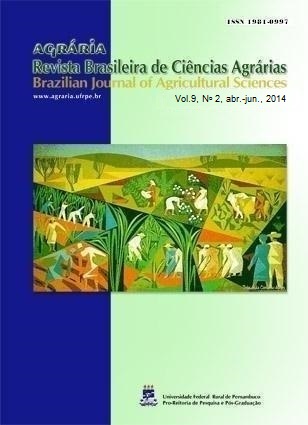Organic acids on the control of bacterial wilt of bell pepper
DOI:
https://doi.org/10.5039/agraria.v9i2a3960Keywords:
ascorbic acid, citric acid, lactic acid, Capsicum annuum, Ralstonia solanacearumAbstract
The effect of disinfectant organic acids on the control of bacterial wilt of sweet pepper (Capsicum annuum L.) caused by Ralstonia solanacearum (Smith) Yabuuchi et al. was evaluated. The in vitro sensitivity of bacteria to the ascorbic, citric and lactic (0.25, 0.5, 1, 2.5, 5 and 10%) acids and the stable mixture of the ascorbic (1%), citric (0.475%) and lactic (0.475%) acids (0.4, 0.8, 2.5, 5, 10 and 100%) (v/v) was evaluated. After the phytotoxicity test the 0.8% stable mixture and ascorbic, citric and lactic acids 1% were selected and tested for bacterial wilt severity reduction, by root immersion or shoot spraying. The pathogen was inoculated by wounding roots and deposition of the inoculum. In vitro, R. solanacearum showed high sensitivity to lactic acid 10% and medium sensitivity to lactic acid (5 and 2.5%), ascorbic and citric acids 10% and stable mixture 100%. All treatments applied by root immersion significantly increased the incubation period (IP) and reduced the area under the disease progress curve (AUDPC), mainly lactic acid 1% (100%). The citric and lactic acids 1% and stable mixture 0.8% also increased IP and reduced AUDPC until 46.1% when applied by shoot spraying.
Downloads
Downloads
Published
How to Cite
Issue
Section
License

This work is licensed under a Creative Commons Attribution-NonCommercial 3.0 Unported License.


